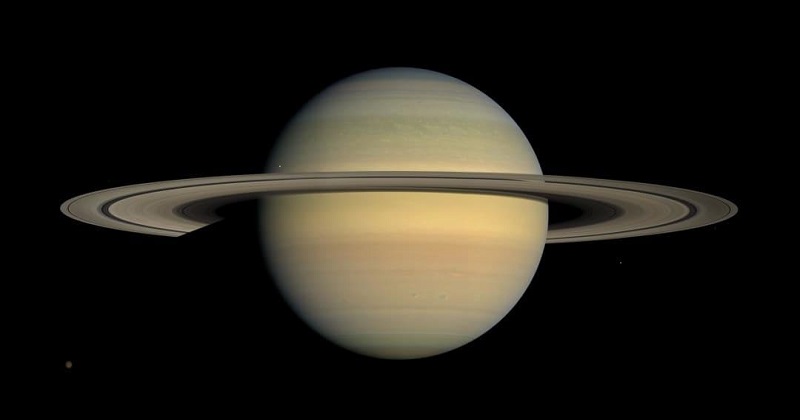
Saturn is distinguished from other planets by its distinctive rings and the fact that it has several moons, the most of any planet in the solar system. Mimas, one of Saturn’s moons, is known for its similarity to the Death Star from Star Wars. Mimas may suddenly be recognised for something else entirely: the possibility of an internal ocean.
Mimas contains a liquid interior ocean, according to scientists from the Southwest Research Institute (SwRI). This information comes from NASA’s Cassini mission, which spent a decade studying Saturn and its moons. Cassini discovered an oscillation in the rotations of the moon, which scientists believe points to a geologically active body capable of supporting an interior ocean.
According to SwRI’s Dr Alyssa Rhoden, the possibility of Mimas having an ocean ‘represents a new class of small, ‘stealth’ ocean worlds with surfaces that do not betray the ocean’s existence’. As Mimas’ surface is extensively cratered, it was formerly thought to be a frozen slab of ice. However, fresh research suggests that it is truly a liquid interior ocean. The moon’s libration (oscillation) is also thought to be warm enough for a liquid ocean to exist while yet being cool enough not to harm the moon’s frozen shell.
Also Read: Two solar flares just erupted on The Sun, bringing coronal mass ejections
Rhodes added that ‘our new understanding has greatly expanded the definition of a potentially habitable world in our solar system and beyond’.
The finding of an interior ocean in Mimas is likely to aid in the understanding of Saturn’s rings, mid-sized moons, and possibly habitable ocean moons such as those found on Uranus. Interior water ocean worlds (IWOWs) are oceans that dwell beneath layers of rock and ice. Other well-known IWOWs include Saturn’s Enceladus and Titan moons, as well as the Europa moon of Jupiter.
More research on Mimas and its interior ocean is needed, which might help to understand more about habitable worlds in the solar system.

Post Your Comments